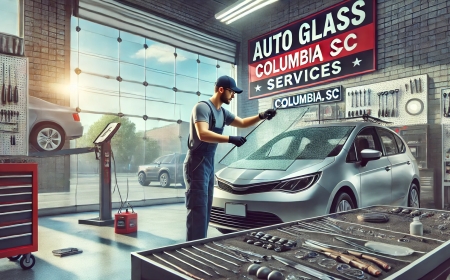Extend the Life of John Deere Motor Graders with Smart Operation
Extend machine life with smart operator habits for any John Deere motor graders, covering hydraulics, powertrain use, terrain, and tech usage.

Why Smart Operation Matters More Than Ever
It is not just about moving dirt when operating a John Deere motor grader, but also about making every pass count without reducing the life span of the machine. With heavy equipment prices on the increase and job site schedules becoming more and more strict, grader life maximization is not an added value; it is a must. Although the engineering of John Deere motor graders is designed to last, the manner in which the machine is used in daily operations contributes significantly to its longevity in terms of productivity and cost-effectiveness. Intelligent operation and careful use habits can be the difference between a grader that lasts 15 years and one that begins falling apart after eight.
Daily Walkarounds: A Simple Habit That Saves Big
A good grader begins with a good eye. Walkarounds may appear as a daily boring task, but it is one of the most effective methods of defense against unforeseen failures. Inspection of fluid leakage, tire wear, loose bolts, and the condition of hydraulic hoses can prevent small problems before they become bigger. Mid-project downtime can be avoided by such basic steps as noticing premature wear on the cutting edge or oil level. When operators incorporate this into their pre- and post-shift inspection, they tend to identify problems earlier, where they can be fixed more quickly and at a lower cost, and prevent long-term damage to the machine.
Engine and Transmission: Respecting the Powertrain
The heart of any motor grader is its engine and transmission. These components are engineered for endurance, but theyre not invincible. Letting the engine warm up properly, especially in colder climates, ensures oil reaches critical components before the load increases. Likewise, avoiding sudden throttle spikes or gear shifts helps preserve the transmission. Running at consistent RPMs suited to the task at hand not only improves fuel economy but also reduces the wear on internal components. Cool-down periods after heavy use are equally important, particularly when shutting down after pushing through tough grades or high ambient temperatures.
Blade Work Techniques That Reduce Wear
Controlling the moldboard may be second nature to seasoned operators, but how its used can significantly impact wear rates. Dragging the blade too aggressively, especially on rocky or compacted surfaces, leads to faster edge deterioration and places unnecessary stress on the circle drive. Instead, applying even pressure and working with, not against, the terrain reduces both machine strain and material loss. Making blade adjustments gradually rather than in sharp, sudden movements helps preserve linkages and hydraulic components. Its less about brute force and more about finesse, which leads to smoother grading and less downtime.
Managing Hydraulics with Precision
Hydraulic systems in John Deere motor graders are incredibly responsive and powerful, but they can also be prone to wear if overused or misused. Excessively cycling hydraulic functions, keeping circuits under constant pressure, or jerky operation can generate unnecessary heat and pressure spikes that shorten component life. Operators should aim to use just enough hydraulic input to get the job done efficiently. Monitoring hydraulic fluid condition and temperature, using the correct oil viscosity for the season, and watching for sluggish controls or unusual noises can help avoid costly component failures later on.
Using Integrated Technology to Ease Strain
Modern John Deere motor graders come equipped with technology thats meant to assist, not complicate, grading work. Features like grade control systems, Eco mode, and on-board diagnostics arent just high-tech add-ons; theyre tools to extend machine life. Grade control systems reduce the number of passes needed, which means less fuel burned, less tire wear, and fewer blade adjustments. Eco mode helps regulate RPMs and fuel usage, easing strain on the powertrain. Diagnostics help identify issues in real time so operators can act before problems lead to shutdowns. Embracing this technology means doing more work with less wear.
Climate and Terrain-Specific Adjustments
No two job sites are exactly alike, and the way you operate a grader in Montana winter is very different from how youd use it on a summer highway job in Arizona. Cold climates call for longer warm-up times and different hydraulic oil blends. Hot environments require closer monitoring of coolant systems and transmission temps. In muddy or loose terrain, traction control and smoother blade work are essential to prevent overexertion. Adapting the machines operation based on site-specific conditions ensures components arent being overtaxed, which adds years to the graders useful life.
Operator Training: The Human Element of Machine Life
No matter how well-designed a motor grader is, it still depends heavily on the skill and habits of the person behind the controls. Experienced operators tend to handle machines more gently, anticipate problems sooner, and adjust to conditions more effectively. Investing in operator training, whether formal or on-the-job, pays long-term dividends. A single operator who understands how to minimize machine fatigue, maximize fuel efficiency, and maintain steady, accurate blade control can add thousands of operational hours to a machines lifespan. The human element is still the most important factor in keeping a John Deere motor grader in top shape.
































